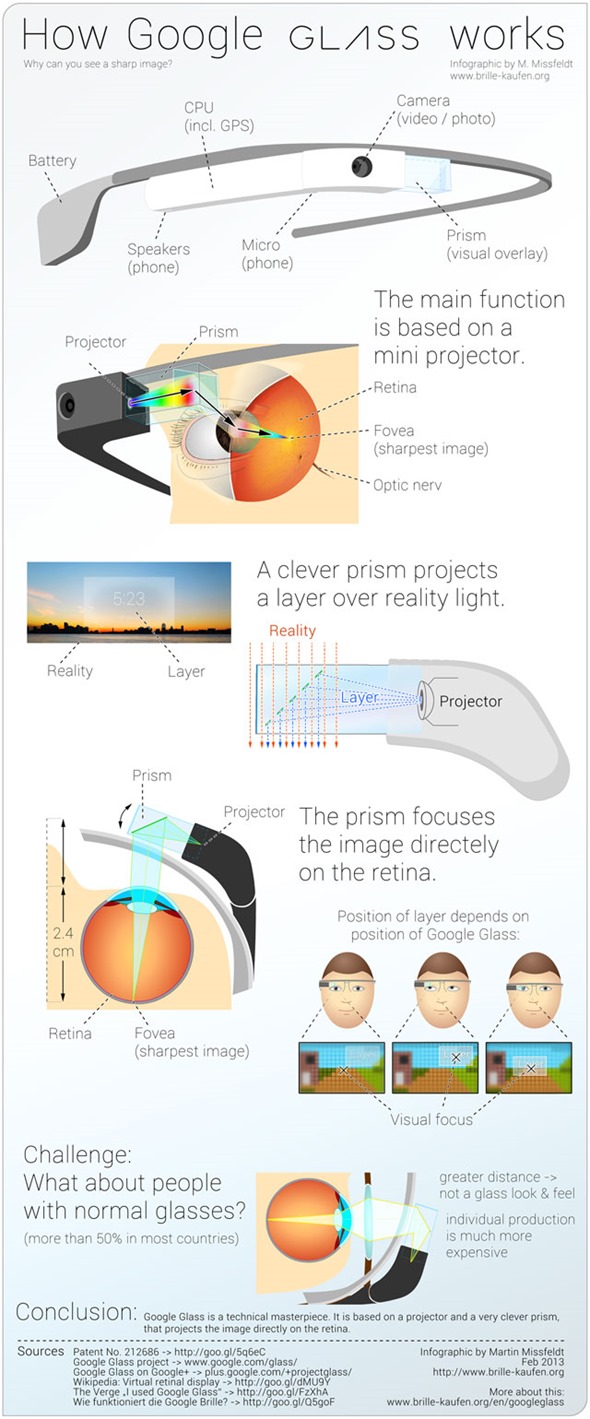Since last year, Google Glass has taken the tech world abuzz as the next big innovation in mobile technology. These glasses, when worn, allow users to carry out tasks that are currently only possible on smartphones, all through an augmented reality layer placed on the user’s eyesight. If you have been wondering how this technology actually works under the hood, a German artist has put together an infographic that clearly illustrated the inner workings of this new futuristic device.
As illustrated by the infographic, Google Glass is comprised by some of the hardware that would usually make up a smartphone, including a microphone, camera, battery, speakers and the CPU, in addition to a mini projector. Images from the mini projectors, which are cleverly hidden next to each of the lenses, are bounced off the prism straight into the user’s retina. This allows the user to see the world around them naturally, where “layers” of information can be displayed on top of it. As one would expect, the position of this augmented reality layer can be changed by simply repositioning the glasses.
The designer also speculates on the main question that many have asked about this upcoming product: how can people who already wear glasses, and with low vision, can actually use the product? The proposed solution will involve changing the position of the prism, ensuring that it sits on top of the standard glasses, which as you might expect would bump up the price quite significantly as it involves creating a product which is, you know, custom in nature.
Google Glass, which began internal testing in April of last year, is currently in prototype stage and gaining interest from consumers and hardcore enthusiasts alike. In addition to some limited developer testing, Google recently launched the Glass Explorer program, which is aimed at allowing a limited selection of early adopters to give the new device a try.
We will be left to see whether these new augmented reality glasses will replace smartphones one day. But we strongly believe that Glass will probably end up as an accessory rather than a proper day-to-day device. Considering how Glass might cause issues when being worn in the workplace, it would be interesting to see how Glass would be used, or accepted in big organizations and firms.
(via: 9to5Google)
You can follow us on Twitter, add us to your circle on Google+ or like our Facebook page to keep yourself updated on all the latest from Microsoft, Google, Apple and the web.



